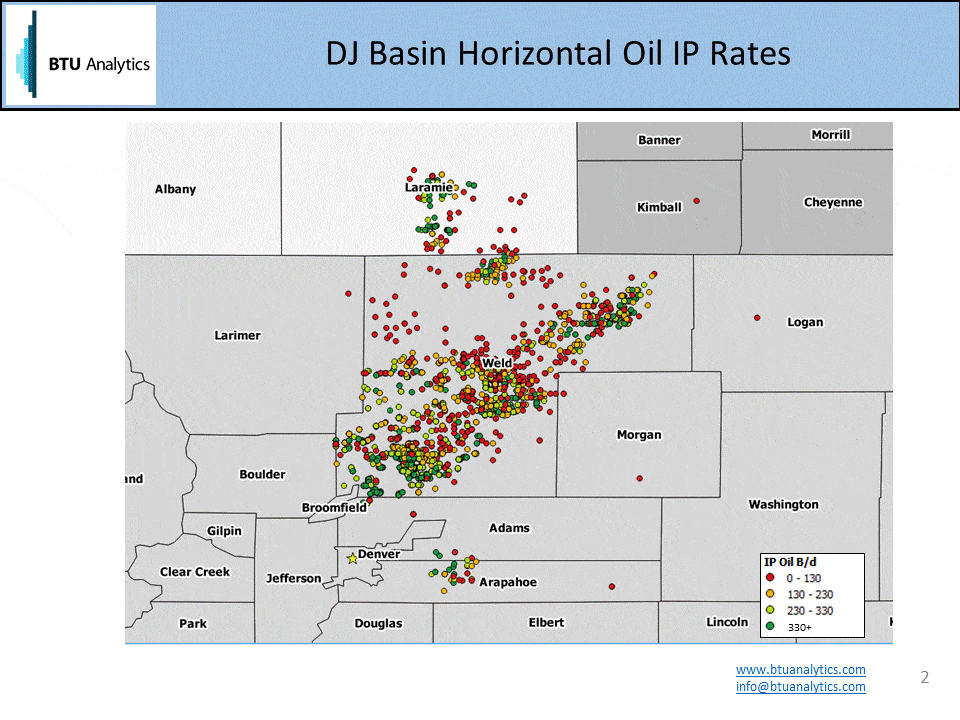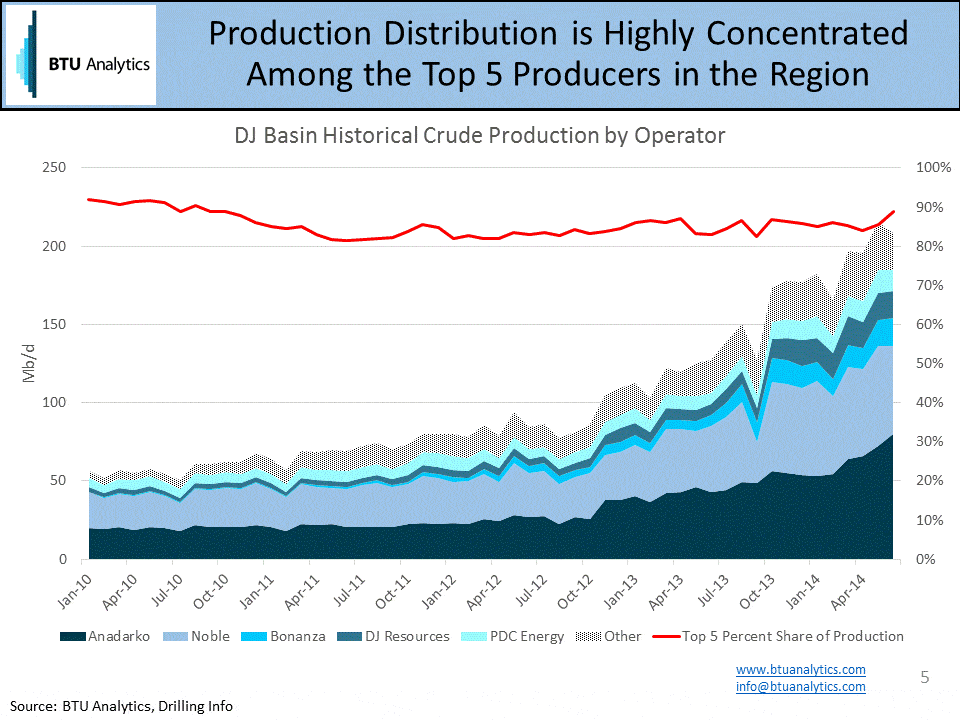In a world where crude oil prices are on a daily roller coaster ride, but a relative abundance of capital is available to be spent on high quality assets, people are on the hunt to find the best value for their investments. The Eagle Ford, Bakken, and Permian have been dominating the spotlight, but people are starting to explore some of the smaller plays like the Denver Julesburg Basin (DJ Basin). The Niobrara in the DJ Basin is one of the few liquids plays that BTU Analytics expects to see robust growth despite low oil prices due to several unique factors that help drive favorable economics in the region, especially for producers like Anadarko, Noble, and pure play operators like PDC Energy and Bonanza Creek – all of whom have stated that they will hunker down in the DJ to weather the storm.
In April’s Upstream Outlook, BTU Analytics will be doing a deep dive into well-level economics for the DJ Basin and how they compare to other premier liquids plays in the US like the Permian, Eagle Ford and Williston Basin. On the surface, starting with oil and gas IP rates, the DJ Basin is a little fish in the pond. However, it boasts some of the lowest horizontal well costs in the country and lower transportation costs to market than the Bakken or the far western edge of the Delaware Basin.

Therefore, while IP Rates and D&C costs are key to any breakeven analysis, there are several factors unique to the DJ Basin which make it a very attractive investment for producers like Anadarko and Noble. For example, like the Williston Basin, DJ Basin production is highly concentrated among a few key players.
In fact, the top five producers accounted for an average of 86% of production in the first half 2014 as compared to 60% in the Eagle Ford and 35% in the Permian. Noble and Anadarko accounted for 63% of total production, which is impressive considering that even in the highly concentrated Williston Basin, the top two producers only account for 22% of production.

Furthermore, from a geographic standpoint, the core of the DJ is located in Weld County which is less than half the size of the core Bakken, which is still significantly smaller from an acreage perspective than both the Permian and the Eagle Ford. Paired with concentrated acreage positions, this creates an advantage when building infrastructure to support growth in the region. These factors give both Noble and Anadarko the ability to strategically plan and coordinate drilling activity with local infrastructure projects and long haul pipelines in and out of the region which ultimately drives lower costs in the region, and improves project economics…. but is it enough to make the DJ Basin the front runner for 2015 as the fastest growing basin in the US? More granular analysis of wells, producers, and infrastructure will be provided in the April edition of BTU Analytics’ Upstream Outlook.










